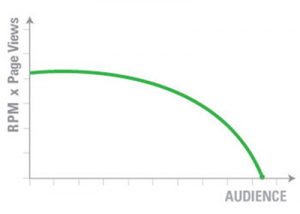
I get asked a lot, “How do I know when it’s time to fire someone?”
I get that question so much, I created a micro-course around it. If you want a full blown course check out my LinkedIn Learning Courses on handling employee problems.
Here’s the link to the micro-course. But, before you hop over there. Consider the following.
Think about the bigger picture first and why it’s come to this at all. I’m asking you do some strategic thinking here. I believe in doing so, you’ll save yourself a lot of heartache and headache.
This is not to say that in thinking and planning more strategically, you’ll never have to let someone go, but there are elements to consider to minimize the possibilities.
I look at employee issues and needs holistically – from a board operational view and from a variety of different angles such as employee retention strategies, minimizing employee problems, employee engagement problems and employee performance issues to name a few.
All of these, no matter which view you entered this post, can be narrowed down to 1 simple issue, that if met holistically could address all of these…and by the way which I comprehensively address with our Effective Executive Blueprint for Smart Management.
All of the above can be narrowed down to one key element and that is understanding human behavior and addressing how it plays out in what ever context the issue is arising.
Here’s an example: If someone is persistently behaving in a way that is harmful or unhealthy to a team, the business, clients, then the issue is a lack of boundaries… or set expectations.
In a different post, I talk about the role of boundaries in business. Having boundaries is a basic principle of human behavior an essential to minimizing this issue. Boundaries set mutually agreed-upon, understood expectations of behaviors and attitudes from the very beginning.
Now I know this just sounds too simple to be true…and yet, it’s not. It is simply a fundamental principle of human behavior related to emotional intelligence and social maturity. Mature people are socially aware and care enough to self-manage…that is set their own appropriate boundaries of behavior, while those who are immature do not.
And so, if they can’t or won’t, you will need to.
Unfortunately some managers stay stuck in complete denial of this need. They keep saying to themselves, “Well why should I have to …..they should be able to….” …and then keep waiting for the better behavior to show up and yet it never does. And by then, a lot of damage is done and a ton of money, time and energy has been wasted.
Important people management coaching point: Managers operate from unconscious assumptions of how folks should and will behave…and then are forced to address issues, solve the emerging performance problems when they’ve become more difficult to reign in.
Crazy though it sounds, this is the most popular reason for common employee performance issues – a manager’s lack of holding folks accountable to behaviors they should have mutually agreed upon from the very beginning, whether new to the company or new to the team.
Remember, it’s the lack of established boundaries and enforcement there of that sets the stage for problem employees and employee issues to develop.
If you’re reading this thinking….”Ok, well I’m in trouble now.” Because “stuff” has already started percolating, you may need to do a team re-set. Here’s a link to help you do that. It’s called Team Building in a Box
No matter what stage you’re in, you’ll need to see that people management skills are really just about learning how to work with the fundamentals of human behavior. Common employee performance issues, as well as employee relations issues are nothing more than issues of human behavior guised as HR speak.
Business & Finance Articles on Business 2 Community
(25)
Report Post



